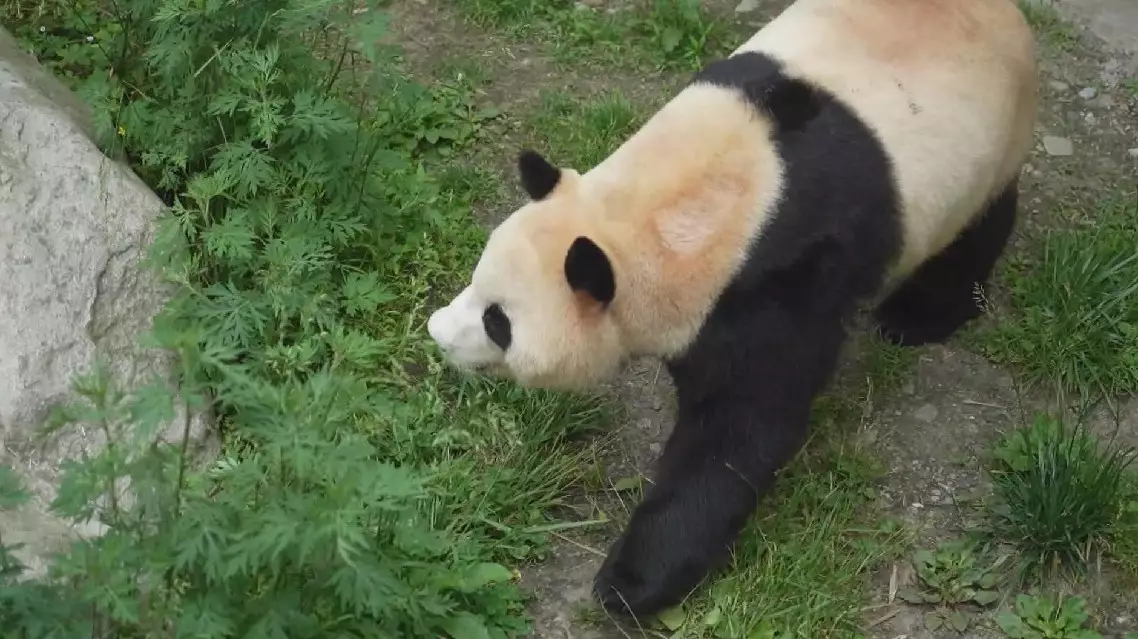Fu Bao, the first giant panda born in South Korea, has been adapting well to local bamboo and other aspects of a new life at a nature reserve in southwest China's Sichuan Province after her return in early April.
The giant panda, dubbed the "top celebrity in South Korea," was born on July 20, 2020. She is the daughter of Le Bao and Ai Bao, a giant panda pair that arrived in South Korea in March 2016 on a 15-year lease.
The celebrity panda's new home at the the Shenshuping Base in Wolong National Nature Reserve offers her a spacious courtyard with plenty of room for a daily stroll, as well as a shaded nook where she can rest on hot days.
Giant pandas at the reserve do not have fixed hours to show themselves to the public, but rather move freely between the indoor and outdoor areas as they please. The breeders, apart from their essential tasks of feeding, cleaning and training, minimize interference, allowing the pandas to enjoy their lives.
Xu Xiang, who has been taking good care of Fu Bao from her quarantine period to her adjustment period, usually prepares the beloved bear's favorite apples and steamed buns at around 11:00.
"When Fu Bao first arrived, we were concerned about its adaptation to local bamboo shoots. We prepared several types of bamboo for it, from bitter to sweet. The next day, we noticed her eating bitter bamboo, which indicated that she had relatively good adaptability," said Xu.
Currently, Fu Bao has adjusted to the local food, enjoys interacting with people and follows a regular daily routine.
"Fu Bao actually has a good temperament. Occasionally, she extends her paw, not to grab you, but to grab something. Giant pandas become familiar with breeders primarily through their sound and scent. Over time, they develop a mutual sense of trust, so, we communicate with her daily. Now that she has settled down, her daily routine is more regular. In the morning, she exercises, walks around, takes a dip in the water when it gets hot, eats some bamboo and has her meals. In the afternoon, apart from eating some supplementary food, she mostly sleeps," said Xu.
During the adjustment period, experts are observing and assessing Fu Bao's progress to determine the time for it to meet the public. It is preliminarily expected that Fu Bao will meet the public in June, with the specific date yet to be confirmed.

South Korea-born giant panda Fu Bao adapts to new life after return to China









